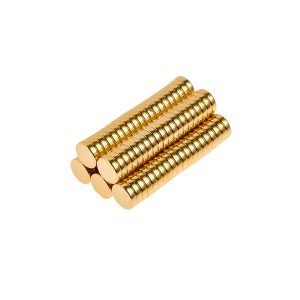Central pain conditions known as chronic overlapping pain conditions include fibromyalgia, endometriosis, chronic migraine, temporo-mandibular disorders, chronic low-back pain, irritable bowel syndrome, interstitial cystitis, vulvodynia and chronic tension-type headache. Read this article to learn about mechanism of COPC and see how magnetic field therapy can be utilized to effectively provide relief from COPC.
Anyone that experiences chronic pain will find this video by rheumatologist and chronic pain specialist Dr Daniel Clauw M.D. very useful – Chronic Pain – Is it All in Their Head?
Dr Clauw explains the difference between centralized pain or what he calls “brain pain” and localized pain and why different medications are required for each pain mechanism. So while a NSAID might work well for knee pain from osteoarthritis, it will have little effect for knee pain associated with fibromyalgia which will be more likely to respond to pregabalin (Lyrica).
Volume Control Setting For COPC
Dr Clauw introduces a very useful analogy for central pain with the guitar strings and amplifier. What he terms the “volume control settings” which is an indicator of your sensitivity to pain. Which is determined by the amplifier, not necessarily the strings, see from here on the video…
These central pain conditions come under the heading of Chronic Overlapping Pain Conditions and include such painful conditions as
- Fibromyalgia
- Endometriosis
- Chronic Migraine
- Temporo-mandibular Disorders
- Chronic Low Back Pain
- Irritable Bowel Syndrome
- Interstitial Cystitis
- Vulvodynia
- Chronic Tension-Type Headache
Pharmacological Therapies for Fibromyalgia (i.e. Centralized Pain)
Before we learn more about applying magnetic field therapy for chronic overlapping pain conditions, let us quickly get an overview of the pharmacological therapies that are generally recommended. We’re well aware of the side-effects of pain killers, and that is one of the reasons that magnetic field therapy is a novel way as it is practically side-effect free way to combat COPC.
| Strong Evidence | Dual reuptake inhibitors such as Tricyclic compounds (amitriptyline, cyclobenzaprine), SNRIs and NSRIs (milnacipran, duloxetine, venlafaxine?) Gabapentinoids (pregabalin, gapapentin) |
| Modest Evidence | Tramadol Older less selectice SSRIs Gamma hydrobutyrate Low dose naltrexone Cannabinoids |
| Weak Evidence | Growth harmone, 5-hydroxytryptamine, tropisetron, S-adenosyl-L-methionine (SAMe) |
| No Evidence | Opioids, corticosteroids, nonsteroidal anti-inflammatory drugs, benzodiazepine and nonbenzodiazepine hypnotics, guatifenesin |
Above Table is modified from Clauw, JAMA. 2014
Magnetic Field Therapy for Chronic Overlapping Pain Conditions
The same principle applies when using Q Magnets. For localized knee pain, it’s best to place the magnet directly on the knee, following the knee placement protocol.
| Pain Mechanism -> | Fibromyalgia | Osteoarthritis |
| Drug Recommendation | pregabalin | NSAID |
| Q Magnet Placement | L3 | Knee joint |
In fact, on the Arthritis Foundation website, Dr Clauw suggests if you’re considering using magnets “to wear over the area of the body where you need pain relief”.

While for centralized pain, it’s important to follow the dermatomes and place the magnet centrally over the corresponding spinal level. “Turning down the volume control” as Dr Clauw describes it. Which in the example of knee pain would be over the third lumbar spine vertebra (L3).
This underscores the importance of working with your treating physician to determine the type of pain you have.
Often the same Q Magnets can be used both locally and centrally. We recommend the larger Q Magnet models such as the QF28-3, QF28-6 and OF50-3 for central placement over the spine, which can also be used over larger joints such as the knee, hip and shoulder. Whereas the smaller Q Magnets might be more comfortable to wear over the smaller joints such as the elbow and wrist.











